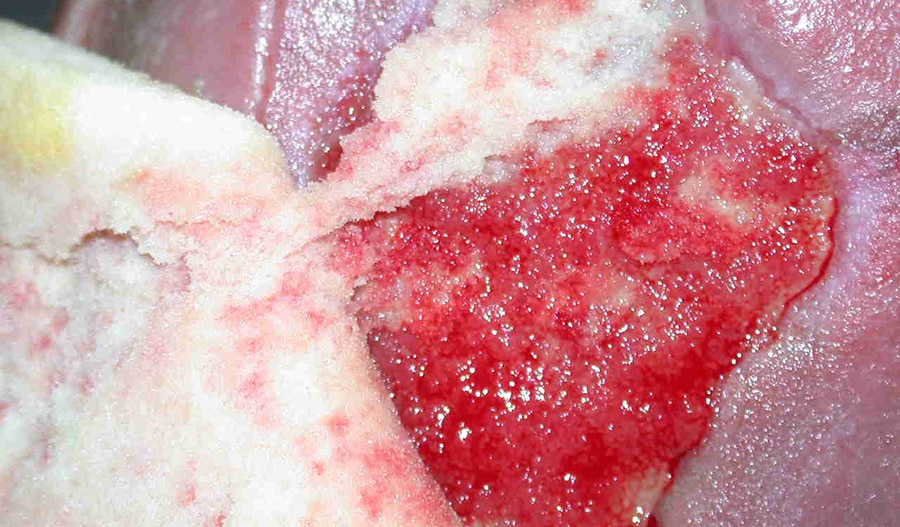Get full access with a free account
Benefits of the Coloplast® Professional Educational platform
![]() Full access to educational content, events and resources
Full access to educational content, events and resources
![]() Track your progress
Track your progress
![]() Share content with your colleagues
Share content with your colleagues
![]() Share supporting material with your patient
Share supporting material with your patient
There are three types of wound healing environments:
- Dry - where the dressing absorbs, but doesn’t keep any of the moisture.
- Moist - where the dressing absorbs and keeps some of the moisture.
- Wet - where you seal the wound with an impermeable membrane that keeps all of the fluid within the dressing.18
Up until the 1960s, the most common approach to wound healing was to create a dry wound environment. Healthcare professionals either left the wound uncovered to allow it to dry, or they covered the wound with a dry gauze dressing.7
However, around that time, Dr. George D. Winter discovered something interesting. Superficial acute wounds healed twice as fast in a moist environment than under a dry scab.9 Since Dr. Winter’s discovery, clinical research has demonstrated that moist and wet dressings are far more effective than dry dressings in helping chronic wounds heal.10
Moist wound healing:
- prevents tissue dehydration and cell death18;
- reduces the risk of wound infection12,19;
- results in less scar tissue19; and
- speeds up angiogenesis and epithelisation 18.
Did you know?
Research shows that using moist wound healing dressings is far more cost-effective than traditional gauze-type dressings.20
Why do moist wounds heal faster?
The main reason why moist wounds heal faster is that epithelial cells migrate faster in a moist environment.
In the final stages of wound healing, epithelial cells migrate across the surface of the wound to close it5,6. These cells need moisture to move across the surface of the wound. If the wound environment is dry, the cells will have to find moisture deep in the wound bed so that they can migrate. This slows down the healing process.7 In fact, studies show that moist wounds heal 50 % faster than dry wounds.5 On the other hand, if a wound is exposed to the air, this creates a dry environment that actually promotes cell death, not healing.4
Wound exudate, or fluid, also plays a vital role in the healing process. This fluid provides the nutrients, proteins, glucose and white blood cells that are necessary for the wound to heal. For example, neutrophils, a type of white blood cell, help protect the body from harmful microorganisms. In this way, exudate actually helps prevent wound infection.
This helps to explain why creating an optimal moisture balance around the wound is so important when managing chronic wounds.
How to create a moist wound healing environment?
One of the most important ways to create a moist wound healing environment is to choose the right type of dressing for the wound.
To find out which dressing you should choose, start by assessing the wound and the level of exudate. This assessment will give you the information you need to choose the right dressing and determine how often you need to change it.27
In general, you should look for a dressing that:
- removes excess exudate from the wound bed;
- protects the wound edges and periwound skin;
- maintains a moist healing environment;
- helps your patient feel confident and secure; and
- is easy for the patient to remove and care for.27
Choosing a moist healing dressing also eases the burden on your patient. When you use moist wound healing, removing the dressing is less painful and traumatic than with dry dressings.18,19 You don’t have to change the dressing as often, and you improve the healing time – all of which benefits the patient.20
Keep in mind that moist wound healing is not suitable for all types of chronic wounds.
For example, you should be careful when using moist dressings on patients with gangrenous diabetic foot ulcers.15 This is because dry gangrene can progress to wet gangrene when moisture gathers under the dressing. You should also be careful if you’re using a moist dressing on a patient with a malignant fungating wound covered by a dry scab (eschar). In these cases, the scab can help to stabilise the wound.17
Moist wound healing

What about wet-to-dry dressings?
Research shows that wet-to-dry and dry adherent gauze dressings are not effective in wound healing.21 Wet-to-dry dressings debride the wound by ripping tissue from the wound’s surface.22,23 This method:
- damages granulation tissue and causes bleeding24;
- causes pain when removing the dressing21,22,24;
- increases the risk of infection22;
- spreads infection in colonised wounds during dressing change22,25; and
- dehydrates the wound bed23.
